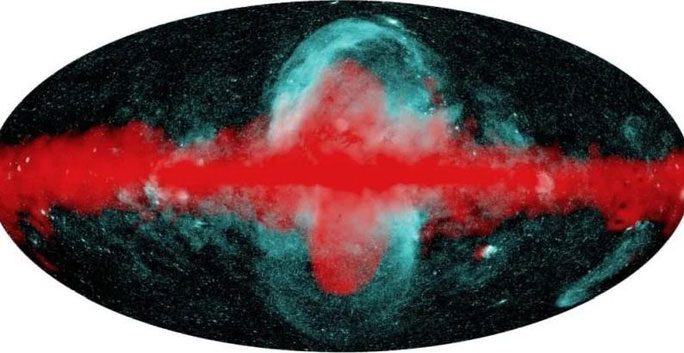Scientists may have identified the culprit behind two pairs of mysterious bubble-like structures attached above and below the galactic plane containing Earth: the young supermassive black hole Sagittarius A*.
The two structures, known as Fermi bubbles, were discovered in 2010. They are filled with hot gas and magnetic fields emitting gamma radiation, extending nearly 30,000 light-years above and below the galactic plane, and have puzzled scientists for many years.

The X-ray and gamma-ray map of the Milky Way galaxy shows the two expanding bubble-like structures, possibly caused by the supermassive black hole – (Image: Nature).
Then, in 2020, scientists discovered another structure called eROSITA bubbles, which emit X-ray radiation and extend nearly 45,700 light-years on each side, encompassing the Fermi bubbles.
A new study led by astronomer Hsiang-Yi Karren Yang from National Tsing Hua University (Taiwan) utilized numerical simulations to uncover the “culprit” behind these two pairs of gigantic bubbles: Sagittarius A*, rather than a previous massive star formation phase of the galaxy.
According to SciTech Daily, these bubble structures formed due to a phenomenon known as “astrophysical jet streams”, generated during the active phase of Sagittarius A*.
At that time, Sagittarius A* was actively consuming material from a massive cloud of gas and dust surrounding it, producing terrifying “burps” in the form of jet streams.
The authors’ simulations indicate that Sagittarius A* has been active for the past 2.6 million years, emitting jets into space for 100,000 years, resulting in the formation of the two strange bubble pairs.
This research was recently published in the scientific journal Nature Astronomy.





















































